January 4, 2024

Working with developer tools is always exciting & challenging. Developer marketing takes things to a whole new level. You're constantly looking for new and creative ways to get the word out about your tool, like skywriting or hiring a mariachi band.
So you've built an amazing developer tool and now you need to get it in front of the right eyeballs. Don't be afraid to be bold and break through the noise.
Focus on solving real problems for developers and clearly communicating how you do it better than anyone else. Build real relationships by engaging with your audience and participating in the community. And don't forget, devs talk to each other all the time - if you make them love your tool they'll become your best advocates. Follow these tips and you'll be well on your way to gaining your first traction and building a passionate user base for your developer tool.
One thing to keep in mind - these channels are most effective when you have the other pieces in place. Make sure you have your product, pricing, and distribution nailed down before diving into promotion. Take a step back and evaluate if you're truly ready as a startup.
Also, not every channel is a fit for every developer audience. I'll explore that more in future posts.
Let's kick things off with some basics that are based on my experience and research. I've learned a lot over the years about what works and what doesn't when it comes to dev marketing.
For now, here are my top 10 developer marketing channels for developer tools along with some practical tips and examples for beginners.
1. Hacker News (HN)
So Hacker News, or HN as we call it, is a place for developers to keep up with what's happening in the world of tech. You'll find all sorts of interesting articles about new tools, programming languages, startups - really anything related to technology.
The community aspect is really cool too. You can join in on discussions about new innovations or get feedback on your own projects. Just be ready for people to be brutally honest. But that's also a good thing - it helps you improve.
HN is founded by Y Combinator, a leading startup accelerator that invests in early-stage technology companies.
There's also a voting system where people can upvote content they find valuable. This helps the most interesting stuff rise to the top. And you may even find your next job on the jobs board they have.
The design is pretty minimal which I like. It doesn't get in the way of the content.
Main features for exploring promo options:
⇨ Show/Ask HN
Publish your GitHub repository or simply share the website of your project. No need to fake upvotes or anything, you'll probably end up getting shadow-banned.
Submit links to articles, blog posts, and other content that is relevant to the technology and startup community. Include a link, title, and optionally, a description. The feedback you'll get could really help take your project to the next level.
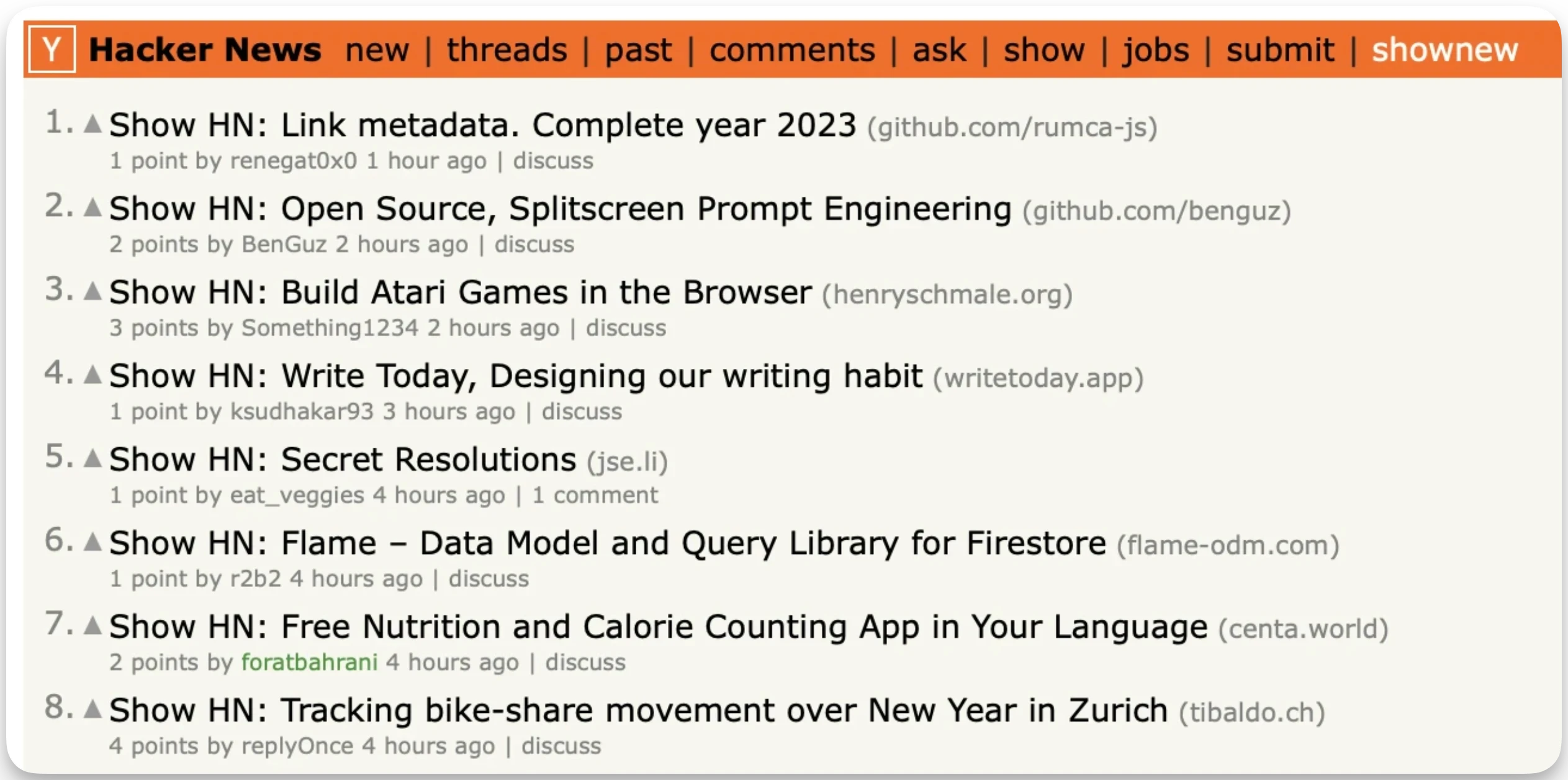
First off, share something real from your own experience. Keep it relatable so others can connect with your situation. You might get some early interest and feedback from people who care. I know, putting your reputation out there is risky. But if you keep it honest and treat others well, that goes a long way. Don't bother with marketing speak. Authentic stories are what really resonate with the community. Give the real you a chance to shine through - it'll serve you better than any hype.
⇨ Commenting
Commenting on Hacker News can actually get a lot of views. The neat thing is that when you comment, you can include clickable links to direct people to your website or blog if it's relevant to the conversation.
The article talked about "How to get 30,000 Hacker News visitors to your website".
2. High-quality content
When it comes to creating high-quality content for your audience, the most important thing is focusing on their needs and interests. Take a minute to think about the specific topics and challenges developers deal with daily. How can you help provide value by sharing your experiences in solving similar issues? A few ideas that often resonate well:
⇨ Feature review
Feature reviews are always helpful. For example, Vercel wrote a piece reviewing new features and highlighting how their tools provide speed and reliability.
⇨ Things you do
People also find it fascinating to learn what goes on behind the scenes. Why not give your audience an inside look at things like your team meetings, coding processes, or planning methods? Everyone approaches work a little differently, so sharing those unique details can really connect with readers on a personal level.
Linear.app, a tool for startups to plan, build, and scale their products, did a great job with this - in a simple yet flawless way.
The bottom line is focusing on topics that directly benefit your readers and show them your human side. With quality, value-driven content focused on their needs, you can really engage your audience and build those important connections.
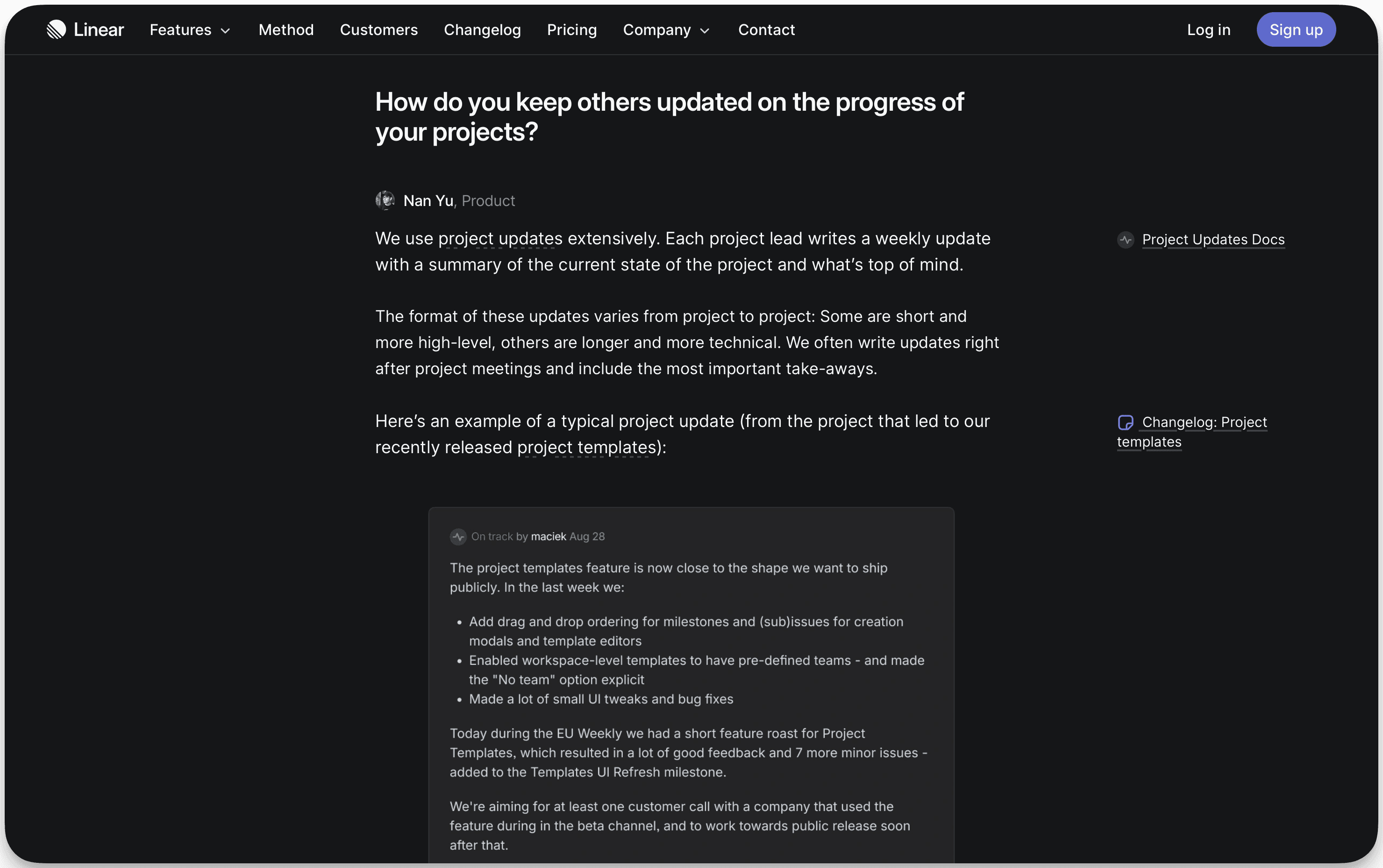
⇨ Case studies
Showing real examples of how customers have successfully used your tool, like the case studies page from Tines got a whole separate page for all case studies in a clear and accessible way.
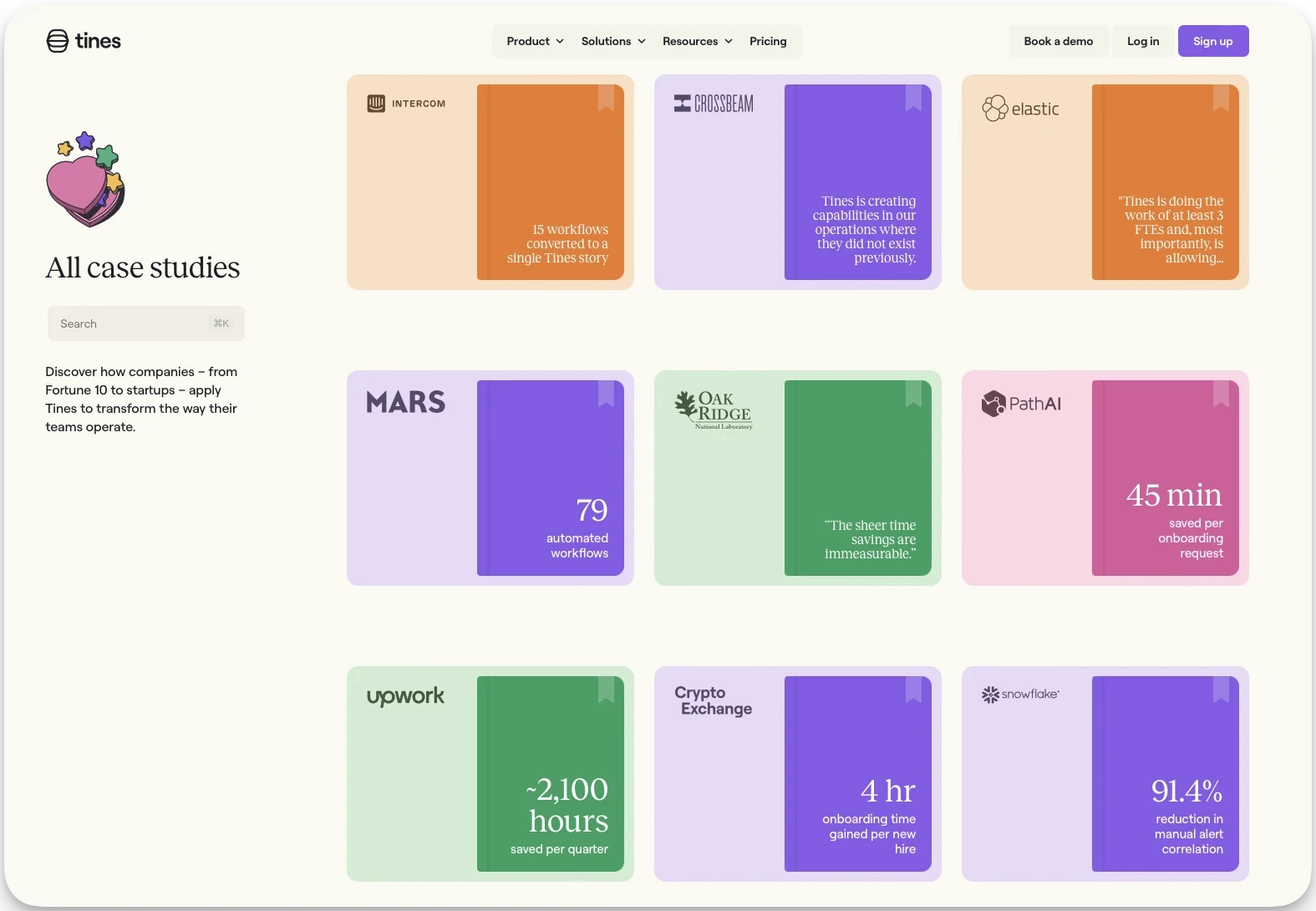
⇨ Reports
Gathering data through surveys and sharing them, like Retool did with their report on AI usage trends. They surveyed 1500+ developers, builders, and business leaders to explore production use cases, the models, infrastructure, and tools that people are using, and much more.
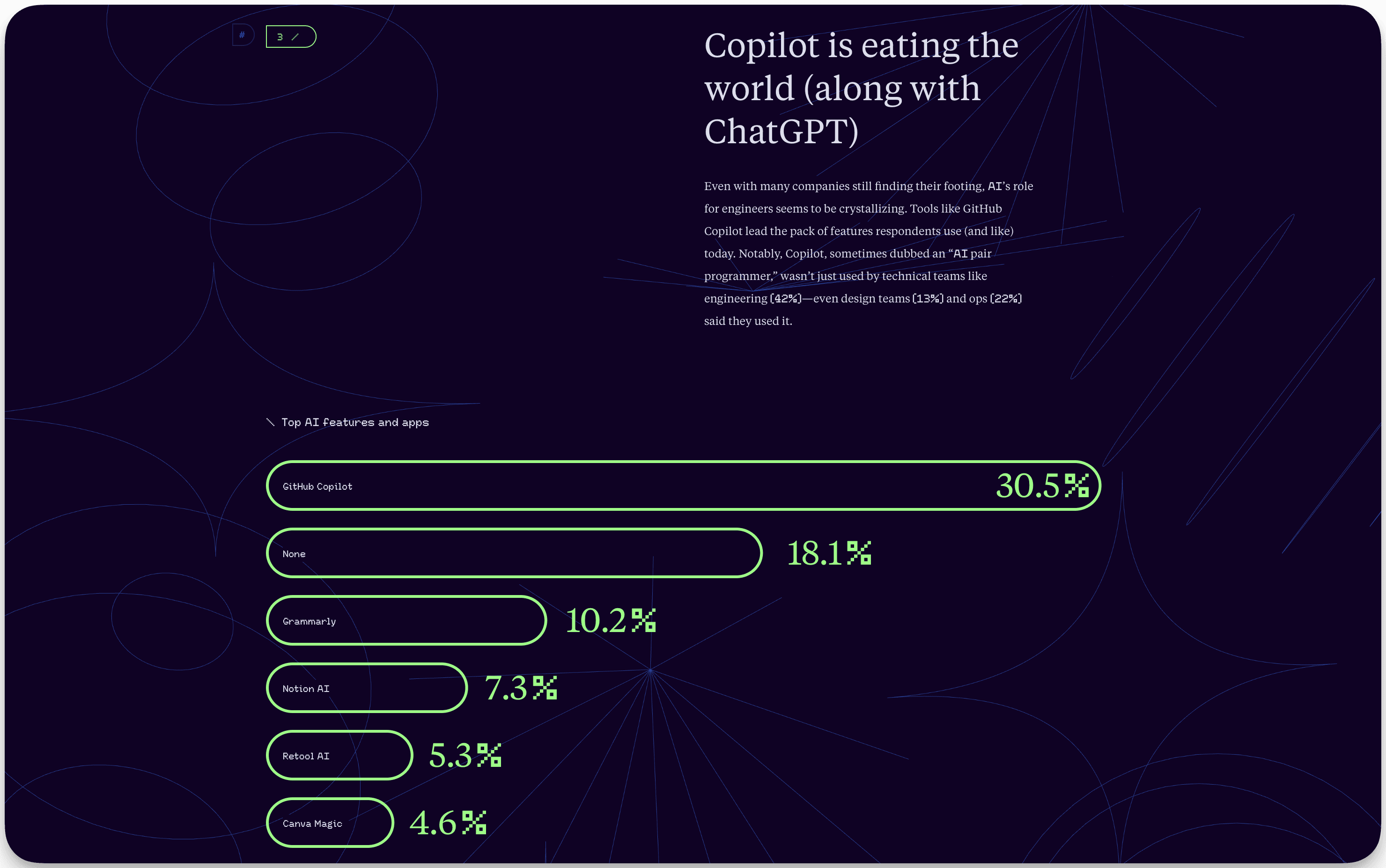
⇨ Technical content (quite an obvious one)
Diving into technical details, such as CodeSandbox covering their work to improve transpilation speed.
⇨ Community experience
Get your community involved - ask them to submit articles on your blog (this could be a part of your dev ambassador program). A great way for your devs to share their thoughts, experiences, and expertise while using your tool. An example of a guest blog post by Sourcegraph, a company developing code search and code intelligence tools that semantically index and analyze large codebases.
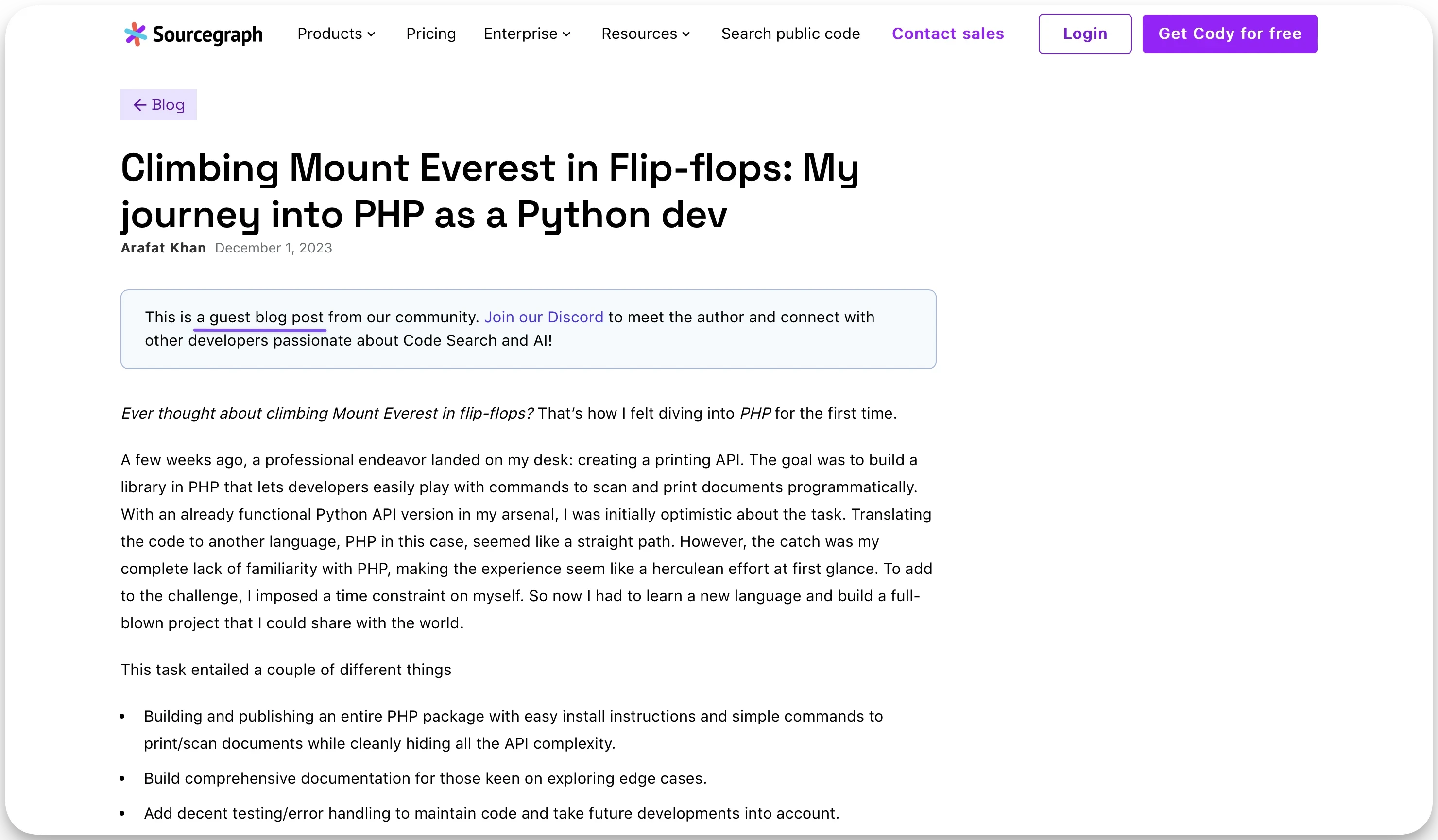
⇨ Guides, tools, and templates
Grafbase provides a modern developer experience to build and deploy high-performance GraphQL APIs.

The most important thing is focusing on topics that directly help readers. With quality, useful content centered on their needs, you can really engage your audience and forge strong connections.
3. YouTube and X dev influencers
So, first things first, start connecting and engaging with potential influencers who caught your interest. Just follow their content and see if their audience matches yours.
Here are some basic tips:
Research the type of dev audience they share content for.
See what programming languages they use and share.
Don't go for the big shots right away. Start with the micro-influencers.
Test your message with influencers who have about 10k followers.
Once you have more content published about your tool, then you can approach influencers with a larger following.
The key here is to find the right audience. You don't need to reach out to every single random influencer you find.
Make real and long-lasting relationships. Reputation matters.
Offer something valuable: a free premium subscription, swag, or a fee, depending on how you negotiate.
Analyze potential results based on data you could request from the influencer, or take a look at the results for content related to other promoted dev tools.
4. Partnerships
Partnerships can provide some great opportunities to work together and become an official partner. Keep an eye out for potential partnership programs.
⇨ GitHub
GitHub Partner Program is one example. It offers exclusive benefits to help scale your services. Perks include marketing assets, sales training, technical support for integrations, and more resources like enterprise cloud and server licenses.
Benefits:
Marketing assets and sales training
Technical support to support your integrations and more
Training and more resources
Enterprise cloud and server licenses
⇨ Partner with tools you use for your application
Check if the tools you regularly use for your software have partnership programs. For instance, if you build apps with Supabase, you could apply to their partnership program to get your integration listed in their marketplace.
⇨ Co-organize and co-write
Reaching out to your network and collaborating with others is another way to form partnerships. Why not contact tools you use, or projects that interest you, and ask if they'd like to work together? But take the initiative - don't expect all the ideas and work will come from them. If you've implemented a particular tool, share a draft case study by email explaining how you used it and your reasons why.
You could also co-organize events. For example, Supabase and Hashnode partnered to host a joint event. Other collaboration ideas include writing guest blog posts for each other, providing references for one another, creating case studies or challenges together, and brainstorming additional concepts that could benefit both parties. Partnerships are a two-way street, so be willing to contribute your own time, skills, and resources to make the relationship mutually beneficial. Looking for ways to support each other through partnerships can help further your individual goals as well as strengthen your network.
5. SEO
SEO is always a good place to start to help more developers discover your stuff. First things first, you'll want to do a basic keyword analysis. Figure out what keywords your target audience is already searching for, what their pain points are, that kind of thing. Get inside their heads a bit.
Once you know the keywords, the next step is to figure out your tone of voice. How are you going to position yourself and your brand to resonate with developers? You want them to feel like you "get" them when they interact with your content. Find a tone that vibes with your audience.
Then it's time to optimize. Optimize your keywords throughout your website, making sure to include them naturally in your page content, headings, etc. And definitely optimize for GitHub too. Of course, optimize your main website as the primary destination.
If you do those three things - keyword analysis, defining your tone of voice, and optimizing for the right keywords in the right places - that's a really solid start for your SEO and should help more developers discover you organically as they're searching for solutions. Keep tweaking things over time as you learn more about your audience as well.
I came across this cool guide from Semrush on how to maximize your SEO impact using ChatGPT. They share some great tips for getting the most out of our conversations to help boost your search rankings.
6. X (Twitter)
If you're really serious about growing your presence on X, then getting an X subscription is worth considering. X offers different subscription tiers like Twitter Premium+ which promises to provide more engagement opportunities. Recently, they launched a new tier called "Verified Organizations Basic" aimed at small businesses.
It's always a good idea to stay up-to-date on any algorithm changes that X makes. The last major change involved emphasizing the presence of smaller accounts.
⇨ Content
Company brand
Consistency is key when it comes to posting on X about your company, products, community, and new features. Developers want to learn about useful tools, so be informative in your tweets. Share in a straightforward way so devs understand quickly. This will attract more of the right audience over time.
For example, Hashnode shared its new feature.
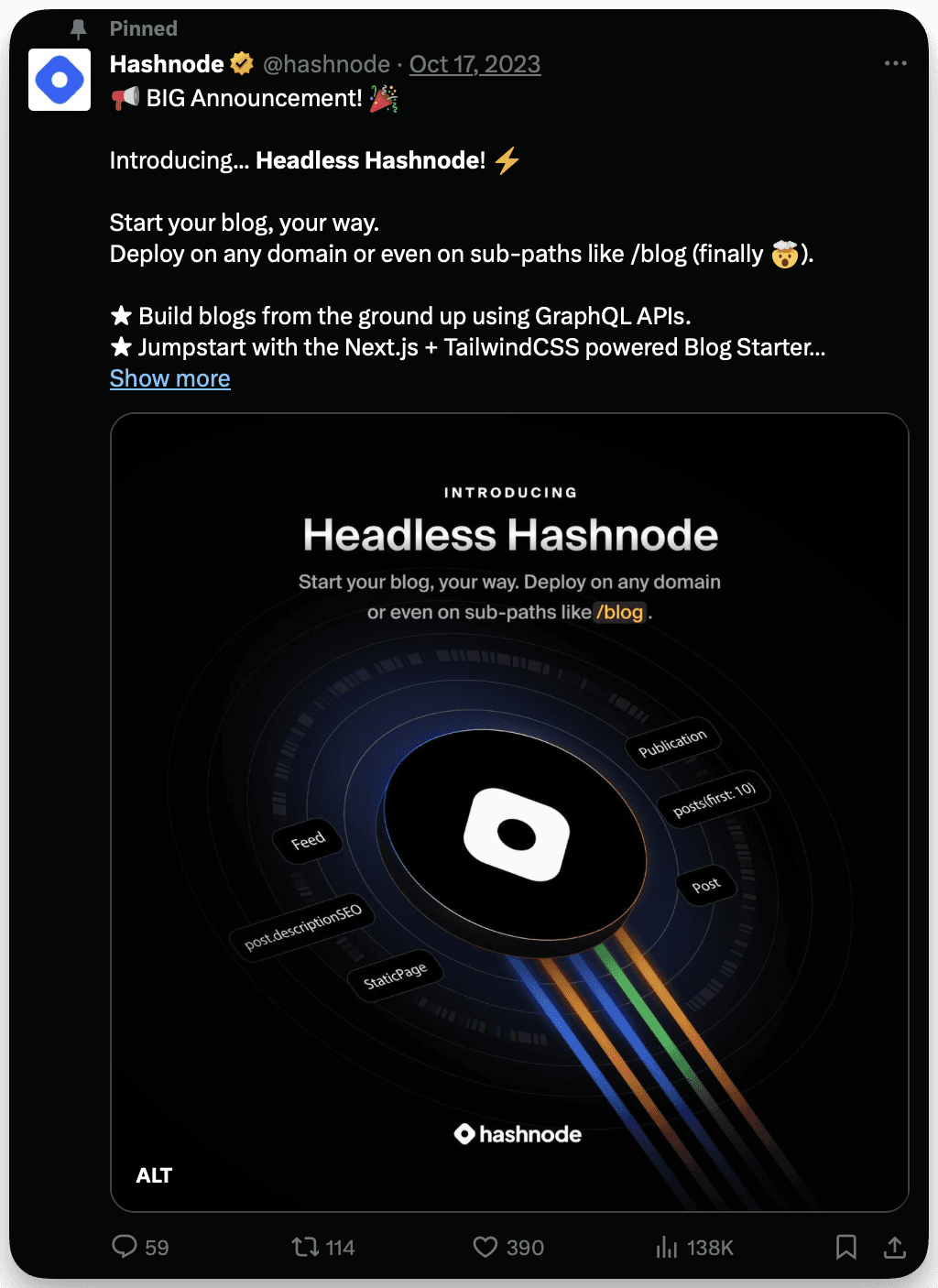
Another one by Linear.app.
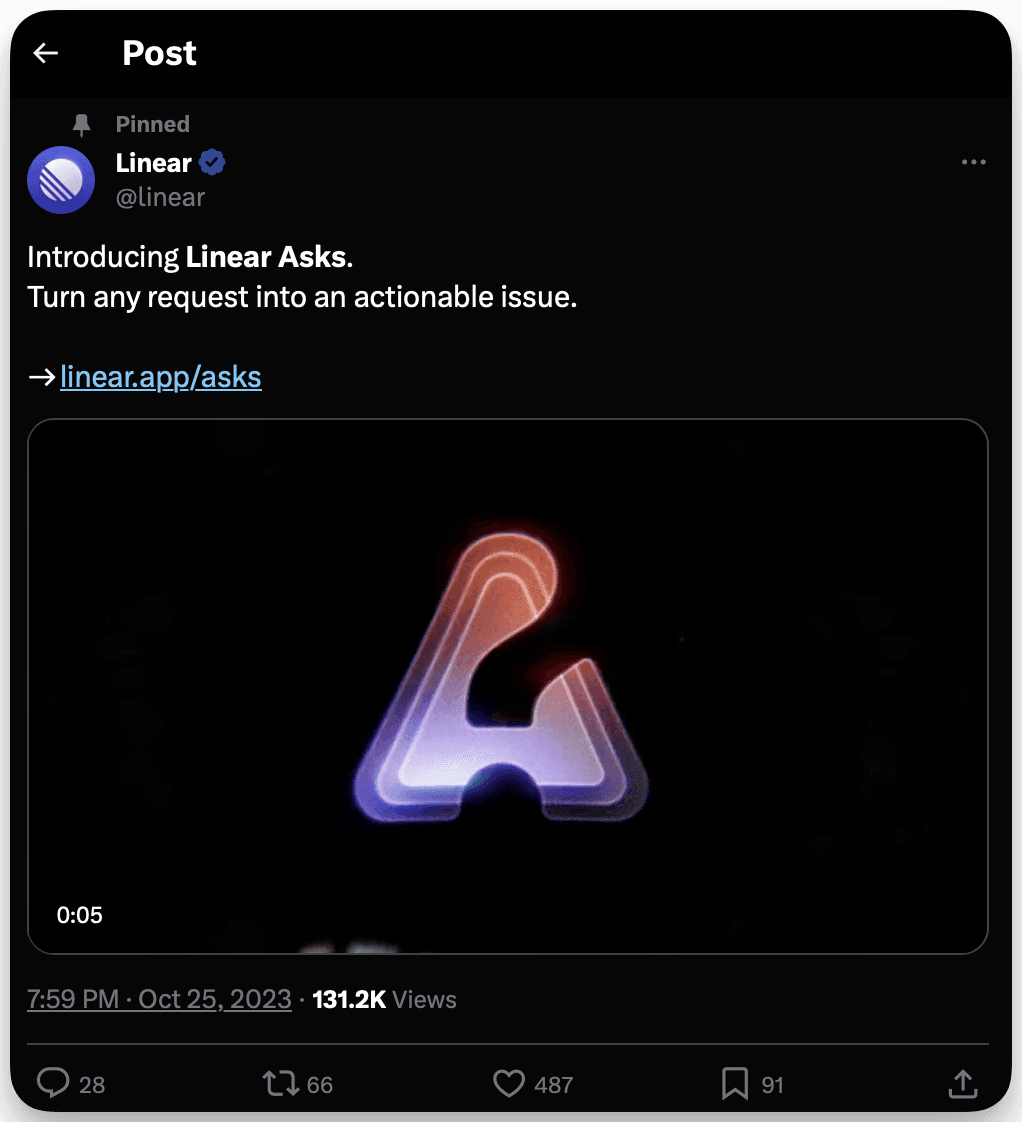
Example of the latest trend of a long-read on X by Reflect.app, following with a comment from a community member.
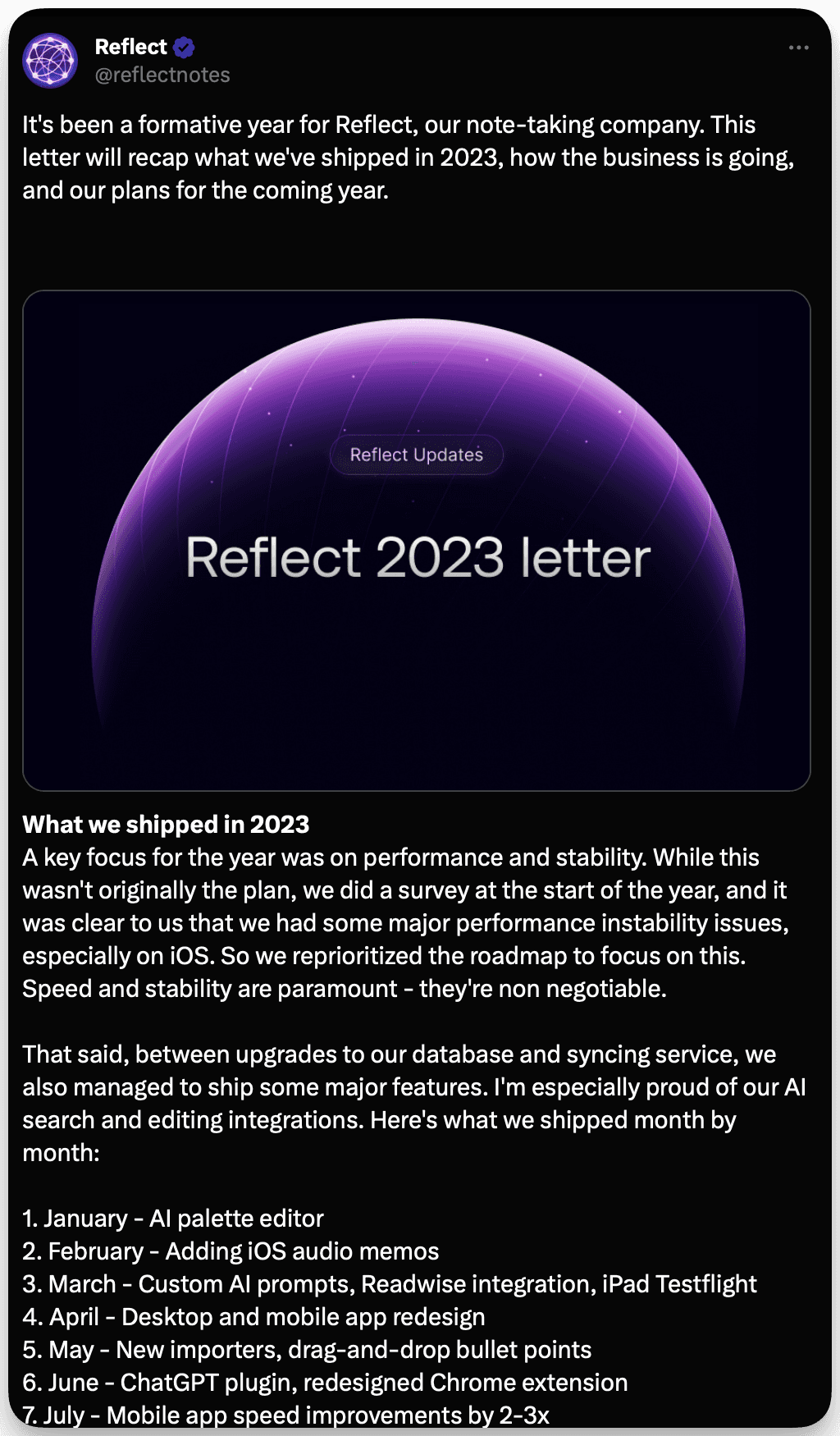
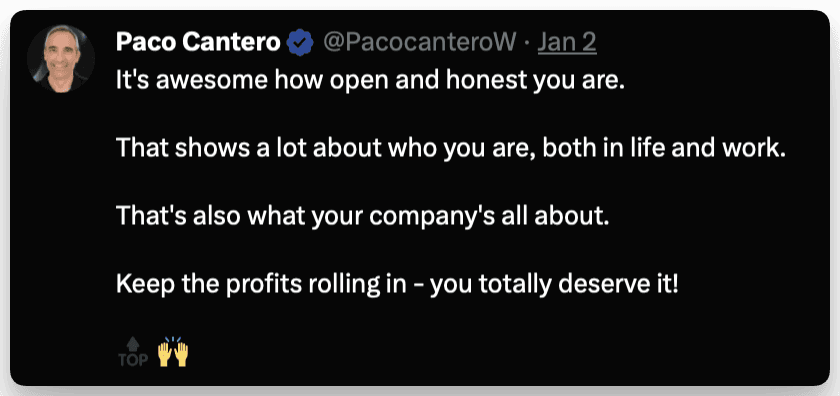
Personal Brand
Sharing authentic experiences can also engage devs. For instance, Jake, founder of Railway.app, shared the incident that happened, honest and direct. Again devs likely appreciated his openness.
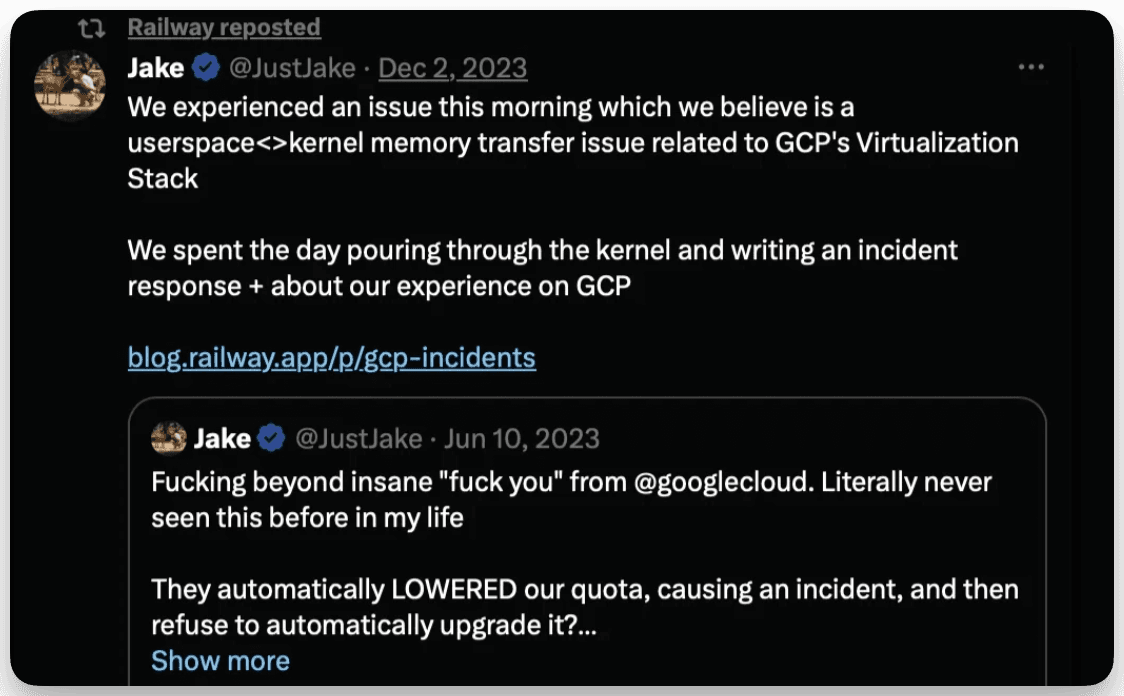
Ask for feedback and opinions.

Be informative with your tweets while also showing your humanity at times. Consistency and relevance are key to gradually growing your following on the platform.
⇨ X Spaces
Yes, the audio chat rooms are still a thing. Consider hosting discussions in X Spaces but focus the conversations around topics developers truly care about. For more tips, an article by swyx on Running Developer X Spaces.
⇨ X Communities
Join relevant dev communities on X. Like here:
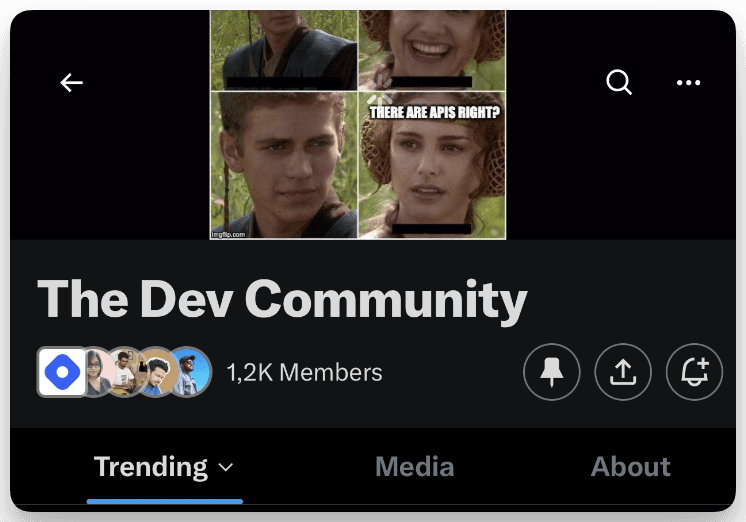
7. More dev forums
Engage with developers on dedicated forums such as Dev.to and Stack Overflow. Respond to their queries, provide guidance, and share your knowledge to establish yourself as a friendly and helpful resource for developers, while also boosting your brand visibility. Let me expand on some of these forums:
⇨ Stack Overflow
Stack Overflow is a public platform for technology-related answers. Stack Overflow is serving 100 million people worldwide. With over 100 million people worldwide using it, Stack Overflow is a powerful resource. Developers can ask questions, learn from each other, and share technical knowledge.
⇨ Showwcase
Showwcase is another network for coders. On Showwcase, developers can connect, share what they know, learn new skills, explore opportunities, get feedback on their work, and ask questions.
Reddit offers a great way to connect with developers interested in specific topics. There are subreddits for nearly every programming language and development framework. By engaging in relevant communities and sharing valuable insights, you can attract developers to your tools without being promotional. It's best to be honest and provide quality information. For example, the Obsidian Reddit community allows Obsidian users to discuss the app.
⇨ Dev.to
Dev.to provides a supportive and inclusive environment for developers of all levels to connect, learn from each other, and collaborate on projects. It covers a wide range of topics, including programming languages, frameworks, tools, best practices, career advice, and more.
There are many online forums that are great for developers to learn and connect. I hope this helps provide more context around some of the options mentioned. You can find more dev forums on "9 Best Forums for Developers to Join in 2023" by Turing.
8. Leverage Your Launch Campaigns
Leveraging launch campaigns is a great way to create valuable buzz and traction for your new product or feature. There are a few different types to consider.
⇨ Product first launch
The first is a product's first major launch on Product Hunt (and other similar platforms). Product Hunt is a popular site where new products are debuted and users can discuss and vote on them. It's a place to get feedback and your first reviews. An example of a dev tool launch is Graphite which did a successful initial product launch there.
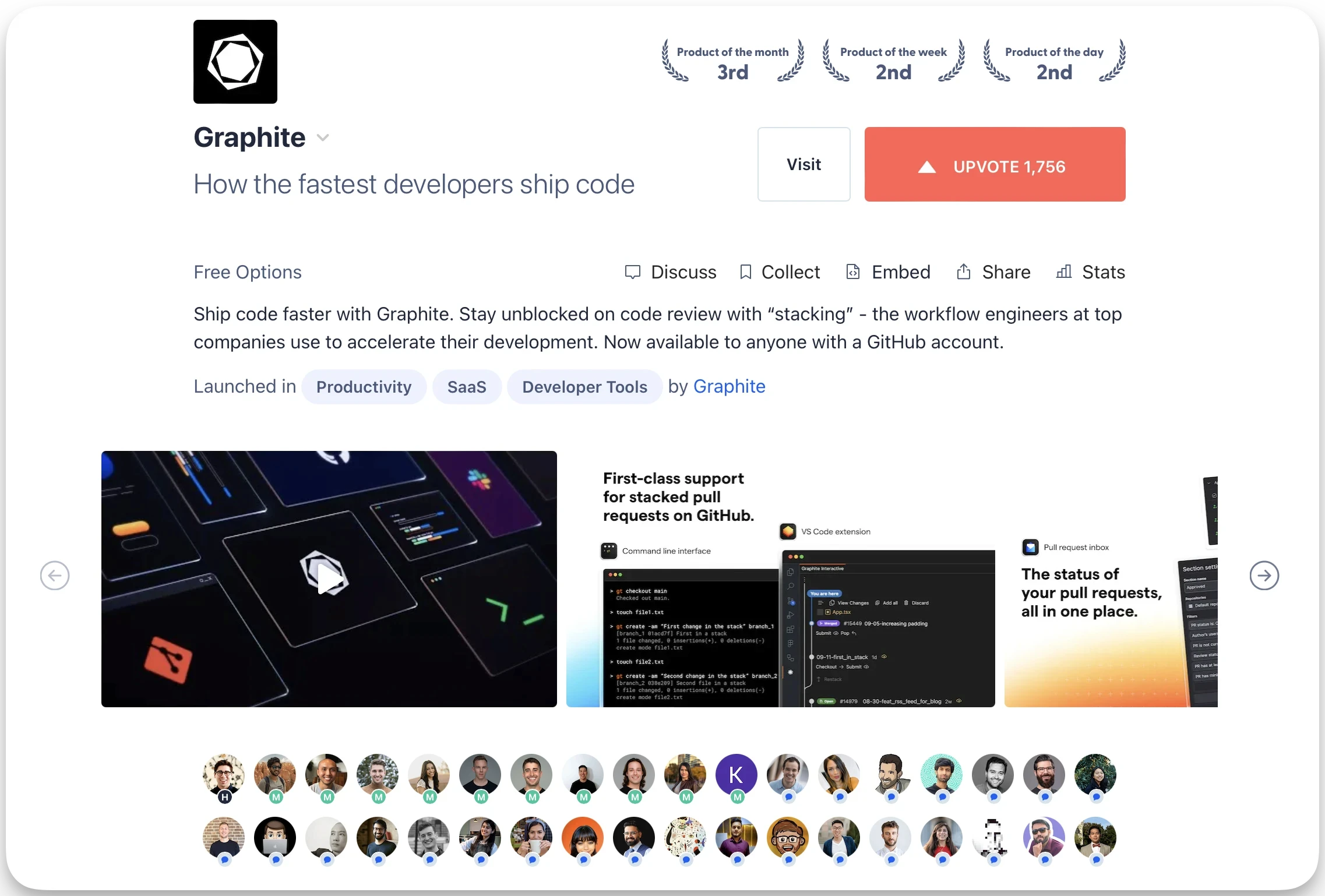
Another platform, DevHunt, is a launchpad for dev tools, built by developers. It's open-source and fair. It's more developer-focused and can get you better traction, compared with Product Hunt.
⇨ Launch weeks
Another approach is to do a dedicated launch week. This involves releasing multiple new features of your product all within the same week. One dev tool that did an excellent job with a launch week was Supabase. Last December they designated a full week called "Supabase Launch Week X" where each day they published new blog posts and highlighted different projects on their product stage. Some of the topics covered were their visual studio tool Supabase Studio, edge functions, branching workflow, authentication methods, and read replicas. By focusing everything within a set timeframe, it helped generate momentum and excitement around all their announcements. Another example was when the email tool Resend launched seven new features across seven days for their first launch week.
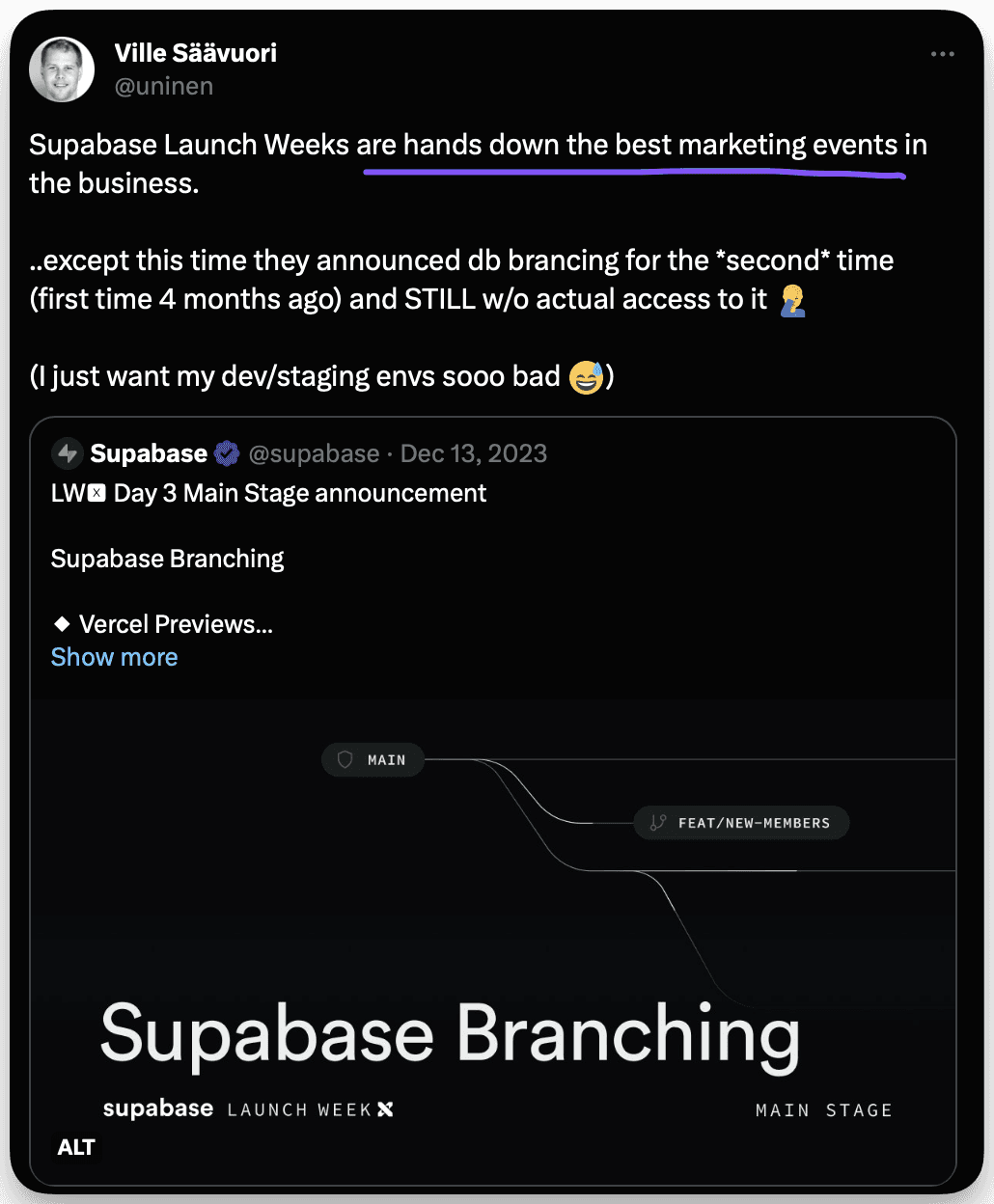
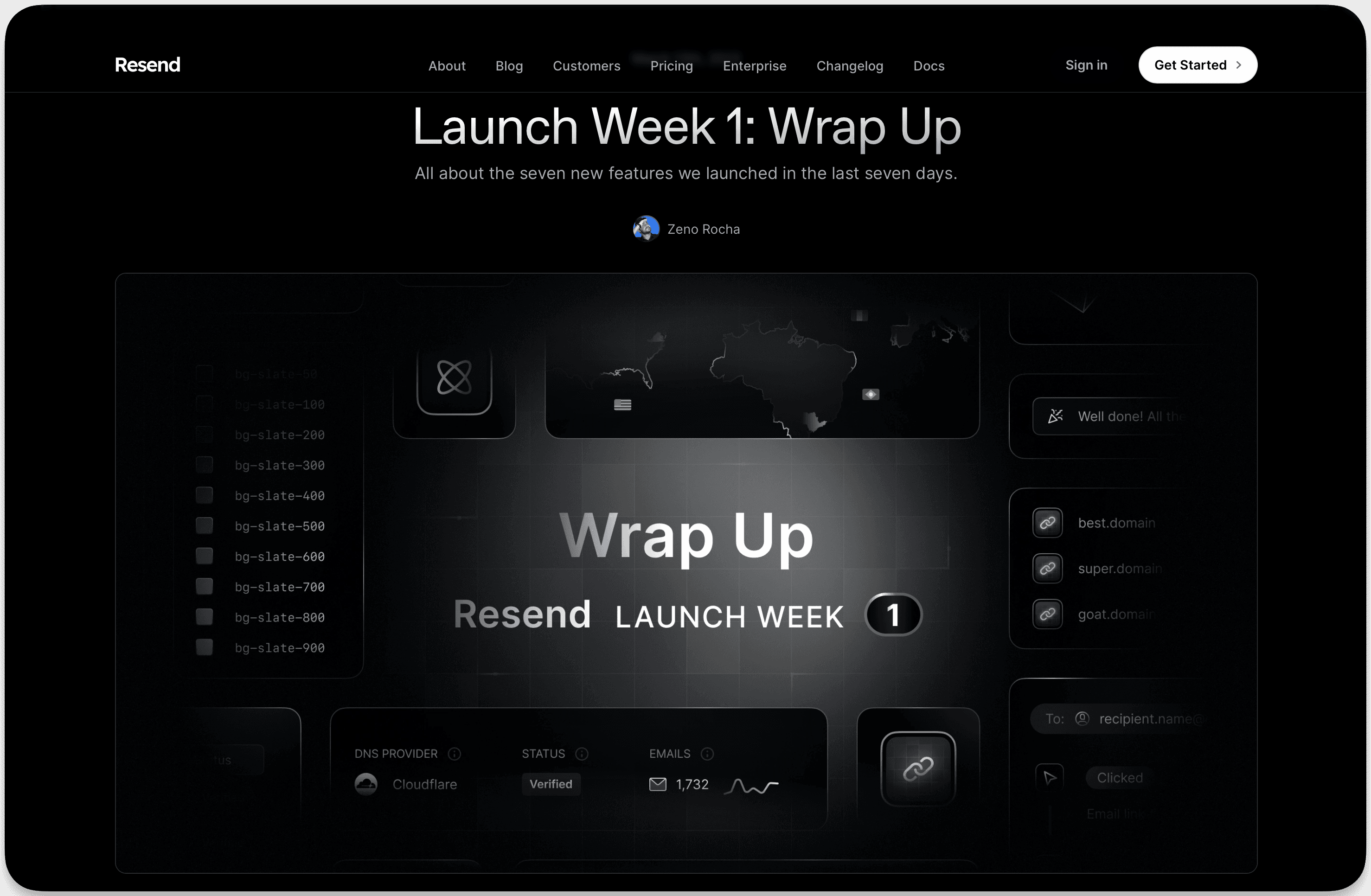
⇨ Feature launches
You can also strategically debut individual high value features on their own. Some companies like launching particularly notable features on Product Hunt to maximize exposure.
Raycast takes this approach, shipping new feature launches anytime they have developed something substantial to share.
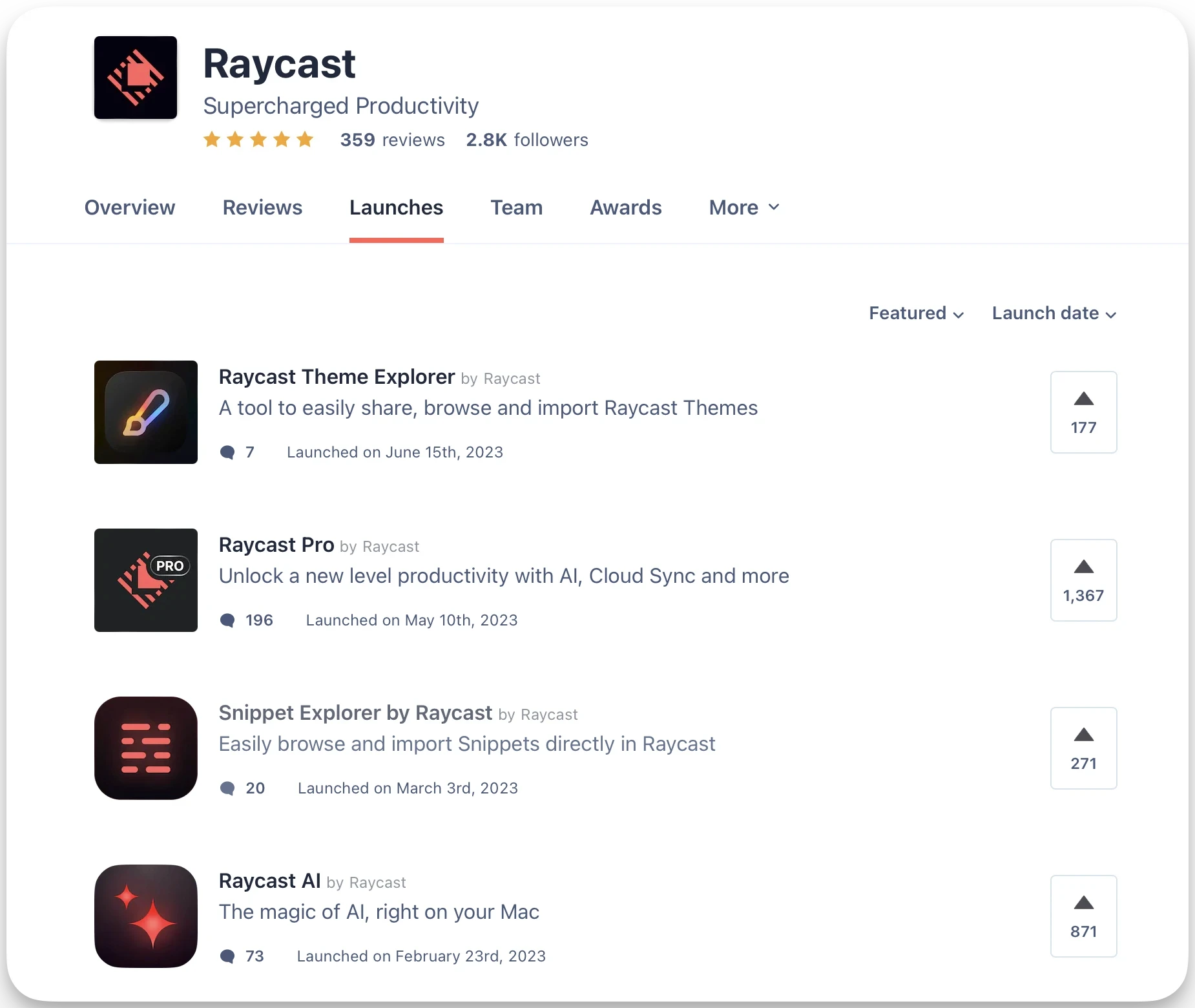
They know debuting focused additions on Product Hunt is a good way to get those features in front of potential new users.
In summary, leveraging planned launch campaigns through product debuts, dedicated weekly events, or spotlighting choice features are proven tactics to help generate awareness and engagement for your software or updates. Choosing the right strategy depends on the size and scope of what you have to announce.
9. Events
Alright, so let's dive into some event options for reaching developers:
⇨ Conferences
Conferences are a great place to start, but not for everyone as it can be pricey and other strategies might be much better in terms of costs. Some big ones that would have your target audience would be DevRelCon, DevConf, and more. I'd recommend presenting a talk or doing a workshop there to get in front of devs. You want to position yourself as a thought leader in your space and sharing your knowledge is a great way to do that.
⇨ Hackathons
Hackathons are another fun option. I really liked what Supabase did by combining their product launch week with a hackathon. They wrote a blog post about it.
Partnering with an existing hackathon or organizing your own internally are both good ideas. You could sponsor one run by a developer community like Hashnode's event sponsored by MindsDB. Come up with a challenge for hackers to implement your tool - it gets them hands-on experience and you some great feedback.
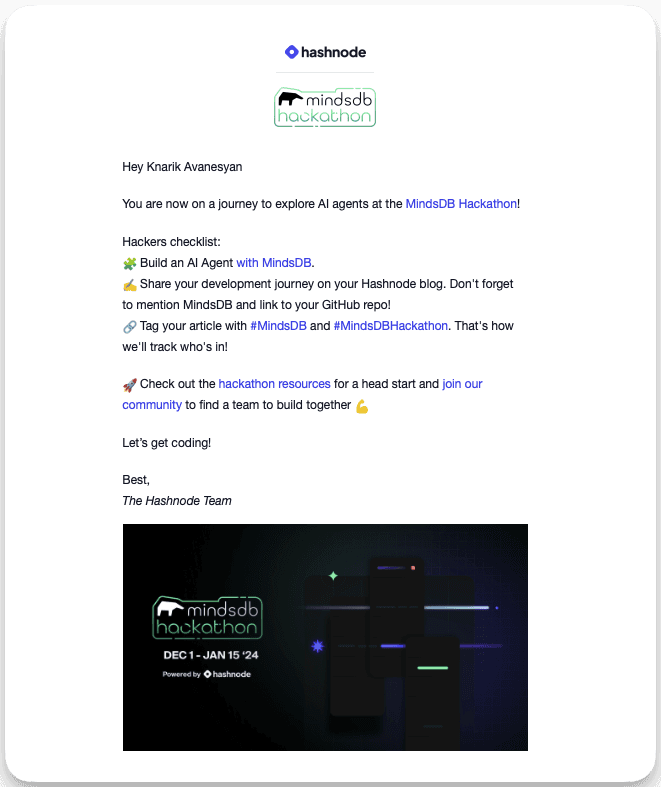
⇨ Webinars
Launch a series of webinars to make sure that devs know how to use your tool and build a deeper connection and trust. Make it fun, add some quizzes and challenges to win your swag. Devs love swag.
Webinars are also effective for educating developers on how to use your product once you've piqued their interest. Launching a series is a good idea so devs have multiple opportunities to learn. Make sure to add some interactivity like quizzes or challenges to keep folks engaged and reward participation with swag. Developers always love swag.
The key is meeting developers where they are through these different events. Get in front of them to share your valuable message, provide opportunities for them to try your tool hands-on, and educate them on getting the most value. It's about developing those deeper connections and establishing trust that will lead to more users in the long run.
10. Community
Build a mission-driven community that will motivate your devs to support you.
Choose a platform where you want to build your developer community. Discord is usually the go-to choice for most dev-oriented tools, but Slack can also be seen from time to time. Depending on where you're at, it's good to think about creating and handling some of these channels, but make sure to tailor it to your specific audience and let your creativity flow.
#channels to create:
#Get started
Welcome
Introductions
Announcements
#Product
Feature requests
Releases
Showcase
Help
Give feedback
#Community
Engineering insights
Events
Ask community
Ask ai
Random
An example of the Slack channel by AirByte, an open-source data integration engine that helps consolidate data in data warehouses, lakes, and databases.
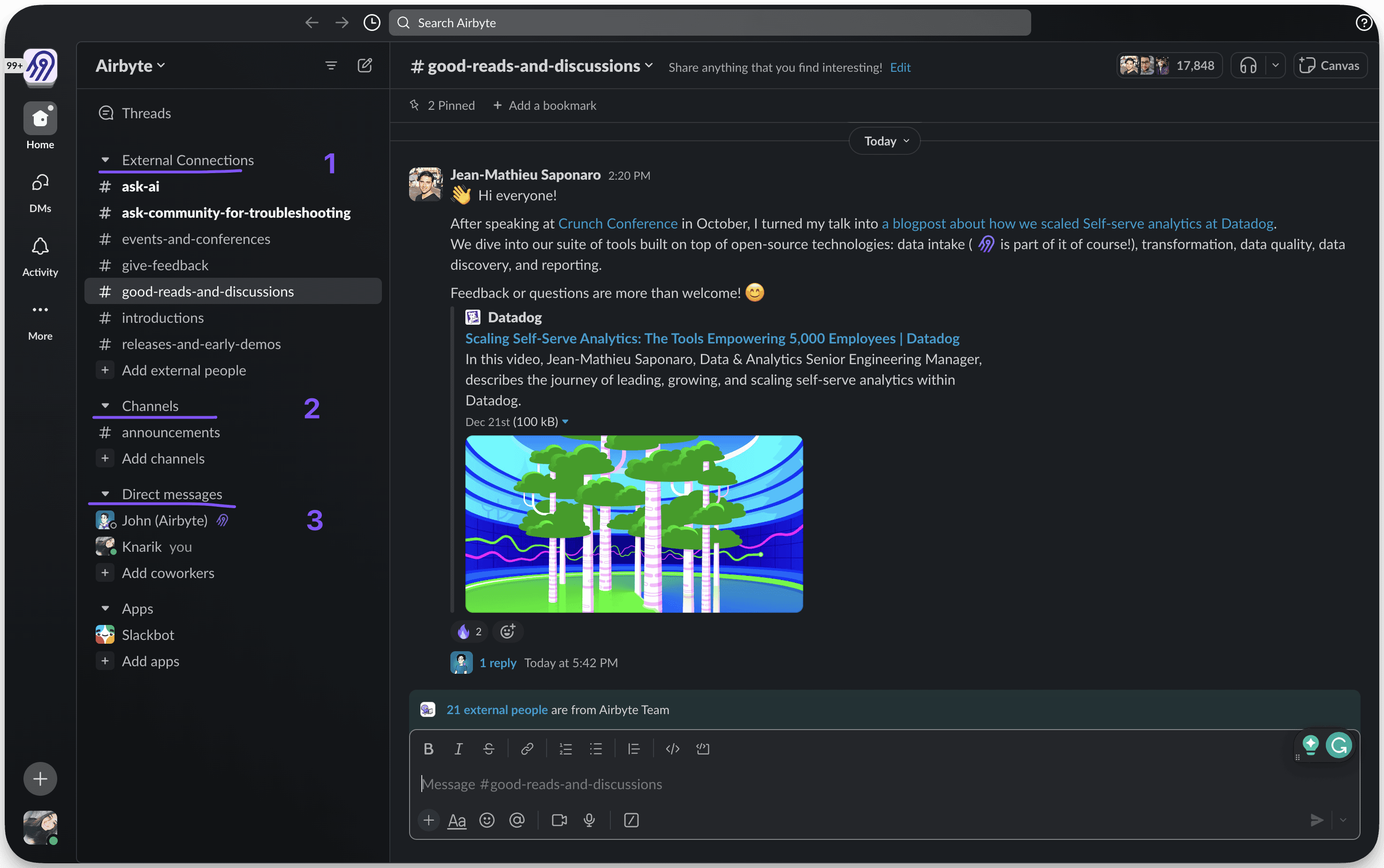
An example of the Discord community by Xata.io, a serverless database platform powered by PostgreSQL.
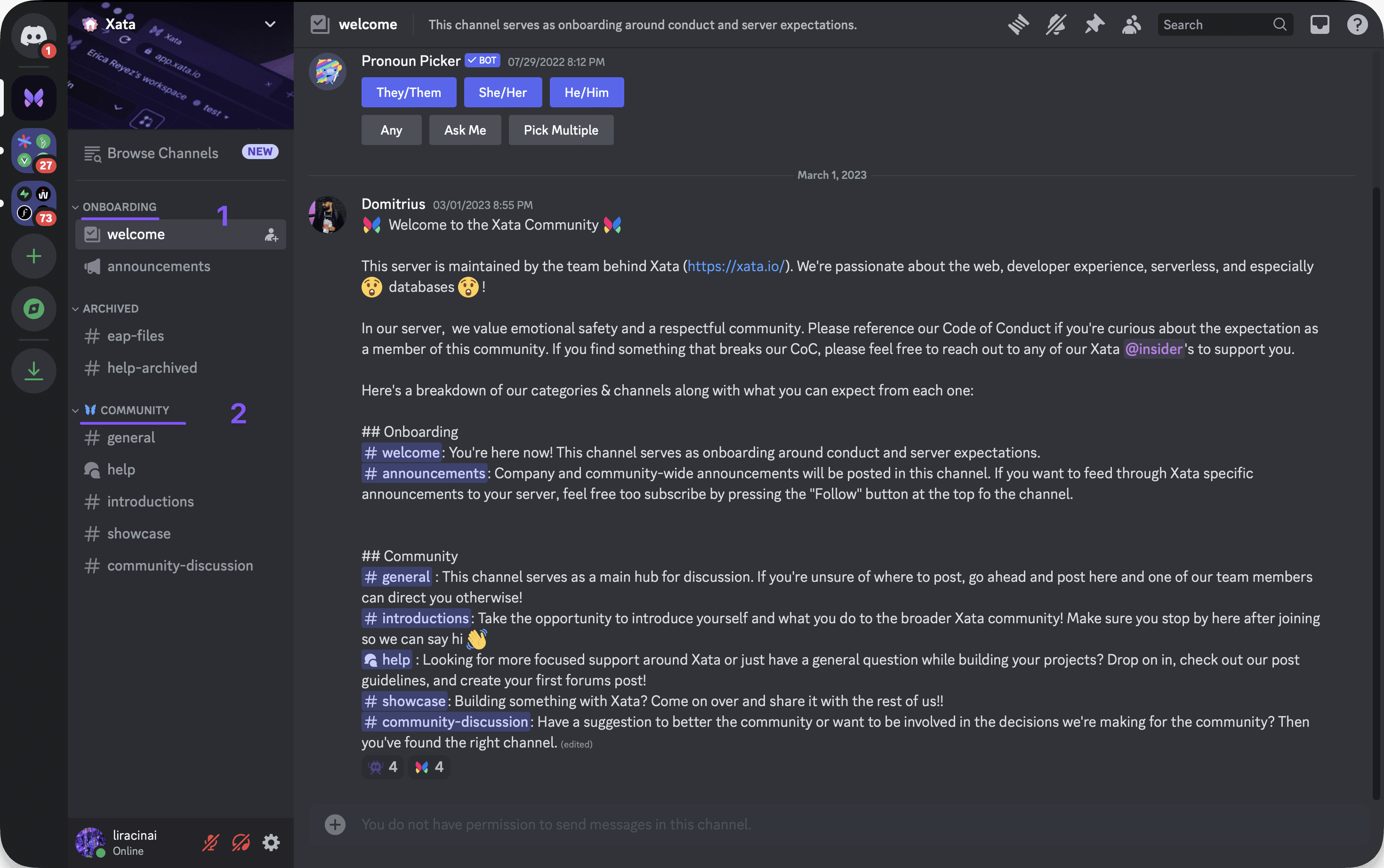
All of these channels and tactics will help you to kick off your first developer marketing activities.
Disclaimer: None of these tools are sponsored. If you have any questions or suggestions, hit me up on x li or email me via hello@growthloading.com. If you want to receive similar blog posts, just subscribe ↓↓↓
By Knarik Avanesyan
hello@growthloading.com © 2024